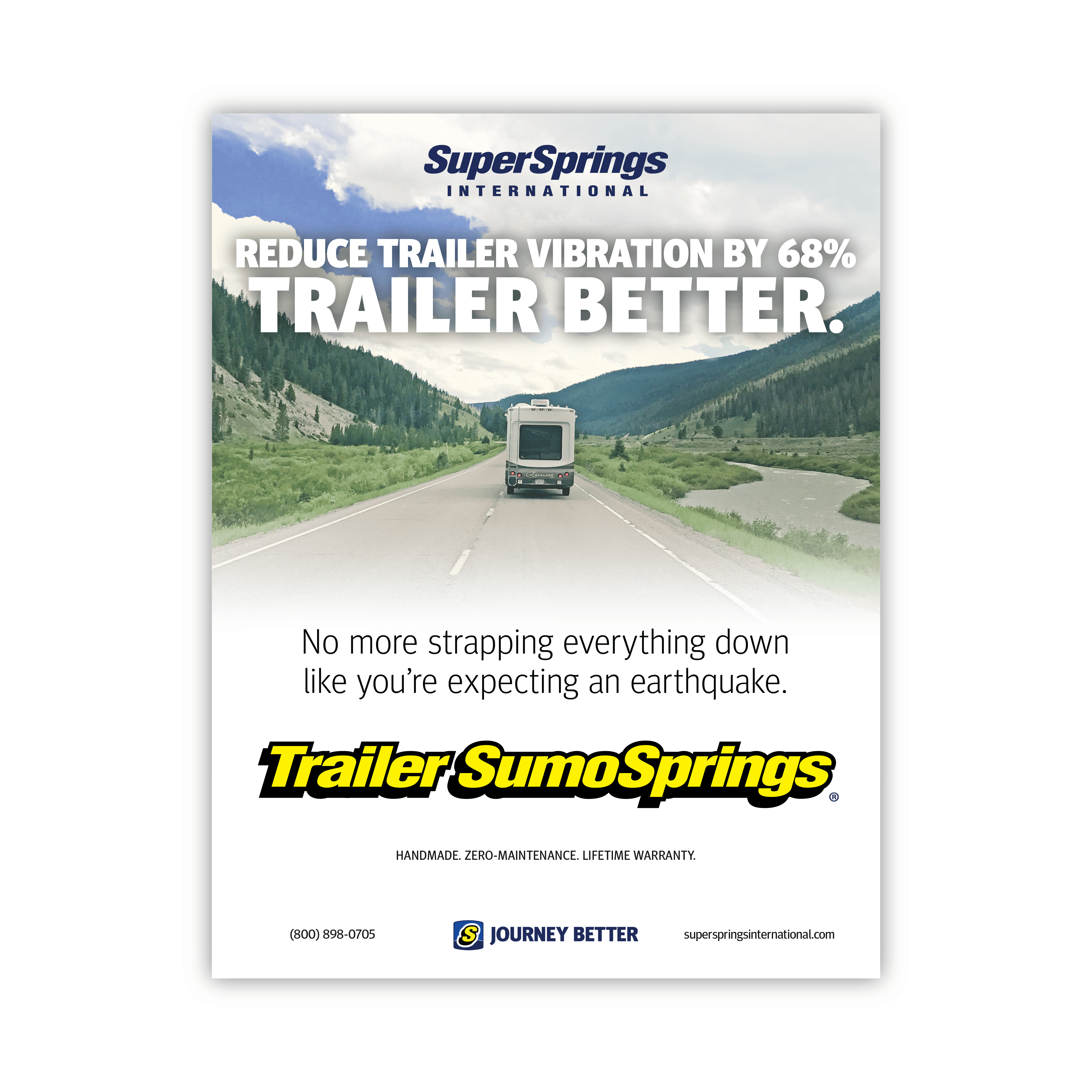Towing a travel trailer for the first time is a thrilling adventure, but it can also be a daunting one if you’re not adequately prepared. From understanding your towing vehicle’s capabilities to selecting the right trailer, there’s a lot to consider. Let’s dive deep into the essential tips for novice trailer towers and introduce you to some valuable tools that can enhance your towing experience.
1. Know Your Towing Vehicle’s Capabilities
Before you even think about hitching up your travel trailer, it’s crucial to understand your towing vehicle’s capabilities. This goes beyond just knowing the make and model – you need to check your owner’s manual or consult the manufacturer’s specifications for precise towing capacity. Overloading your vehicle can lead to handling issues, reduced fuel efficiency, and, most importantly, safety concerns. By adhering to your vehicle’s limitations, you can ensure a smoother, safer towing experience.
2. Choose the Right Trailer
Selecting the appropriate travel trailer is essential. Your choice should align with your towing vehicle’s capacity. Lightweight trailers are generally easier to tow, but if you have a more substantial, robust towing vehicle, you can consider larger, more feature-rich models. Always confirm the weight limits and compatibility between your vehicle and the trailer to avoid any surprises or difficulties on the road.
3. Load Distribution Matters
How you load your travel trailer significantly impacts its stability on the road. Strive for a well-balanced load with heavier items positioned low and centralized. Proper weight distribution minimizes sway and makes your trailer more manageable during turns and stops. Consider investing in weight distribution hitches or sway control systems for added safety.

4. Practice Backing Up
Backing up a trailer can be a nerve-wracking experience for first-timers, but practice makes perfect. Find an open, empty space to hone your skills before you hit the road. Remember that when you turn the steering wheel, the trailer moves in the opposite direction. Patience and practice will help you navigate tight spots and campsites with confidence. Here are some helpful tips for backing up a travel trailer:
- Choose the Right Location: Find an open, empty parking lot or a quiet area where you have plenty of space to practice. Look for a location with clear lines or markers on the pavement to serve as visual guides.
- Get a Spotter: Having a spotter outside the vehicle can be immensely helpful, especially as you’re learning. The spotter can provide real-time guidance and watch for obstacles you might not see.
- Practice Straight-Line Backing: Start by practicing straight-line backing. This involves moving the trailer directly backward without any turns. Begin by positioning the trailer straight behind your towing vehicle. Use your side mirrors to monitor the alignment, and then slowly reverse while keeping the trailer in line. Use minimal steering adjustments to maintain a straight path.
- Use the Bottom of the Steering Wheel: When making steering adjustments while backing up, use the bottom of the steering wheel. If you want the trailer to go left, turn the wheel to the left; if you want it to go right, turn the wheel to the right. This can help you avoid overcorrections.
- Practice 90-Degree Backing: After mastering straight-line backing, move on to 90-degree backing, which is useful for parking in tight spots. Position your towing vehicle and trailer so that they form a right angle. Begin to reverse and, as the trailer starts to turn, make gentle steering adjustments to guide it into the desired parking spot. Continuously check your mirrors and adjust as needed to keep the trailer on track.
- Correcting Mistakes: Expect to make mistakes as you practice. If the trailer starts to jackknife (forming an acute angle with your towing vehicle) or go off course, don’t panic. Stop, pull forward, and correct your steering. Sometimes it’s easier to reset and start again.
- Develop Spatial Awareness: Understanding the spatial relationship between your towing vehicle and the trailer is essential. As you practice, you’ll develop a better sense of how much you need to turn the wheel to achieve specific trailer movements.
- Be Patient and Take Your Time: Backing up a trailer is a skill that requires patience and practice. Don’t rush the process. Take your time to build confidence and become more comfortable with the movements.
- Communication with Your Spotter: Maintain clear communication with your spotter. Use standardized hand signals or simple verbal commands to convey your intentions. Make sure you both understand what each signal means.
- Real-World Practice: Once you’ve gained confidence in an open area, practice backing into real-world scenarios like your driveway or a campsite. These practical experiences will help you refine your skills and adapt to different situations.
Remember that backing up a trailer is a skill that improves with practice. Start in low-stress environments and gradually work your way up to more challenging situations. Over time, you’ll become more confident and proficient at maneuvering your travel trailer in tight spots and busy campgrounds.
5. Check Your Tire Pressure
Regularly inspect the tire pressure on both your towing vehicle and the trailer. Adequately inflated tires are vital for safe towing. Proper tire pressure not only enhances handling but also reduces the risk of a tire blowout. Consult your owner’s manuals for the recommended pressure levels, and always perform these checks before every trip.
6. Plan Your Stops
When towing, anticipating your stops is essential for safety. Leave extra space between you and the vehicle in front, and brake early to avoid sudden, jarring stops. Plan your route with ample rest areas and safe stopping points, allowing you to take breaks and stretch your legs.
7. Monitor Your Speed
Maintaining a safe, steady speed is crucial when towing. Avoid excessive speed, as it can lead to sway and reduce your control over the trailer. Stay within recommended speed limits, and always adapt to road and weather conditions. Keep in mind that towing can affect your stopping distance, so exercise caution.

8. Use Mirrors and Stay Alert
Visibility is key when towing, so invest in extended mirrors to enhance your view of the trailer and the road behind you. Staying alert is equally important. Consistently check your mirrors to monitor traffic and the trailer’s behavior. Avoid distractions, and always stay focused on the road.
9. Invest in SumoSprings for a Smoother Ride
For an even smoother towing experience, consider SumoSprings and Trailer SumoSprings. These innovative suspension products are designed to improve stability, reduce sway, and enhance ride comfort. They work by providing progressive load support, effectively reducing bounce and jarring movements caused by uneven roads or crosswinds. With SumoSprings, your towing vehicle and trailer can operate more harmoniously, creating a safer and more comfortable journey.
10. Take It Slow
Patience is the golden rule when towing a travel trailer for the first time. Slow down, enjoy the scenery, and embrace the journey. Plan your route in advance, and allow extra time for unexpected delays or interesting detours. By taking it slow, you’ll not only reduce stress but also ensure a safer, more enjoyable experience on the road.
Sign Up for More Tips, Adventures, and Exclusive Offers
Embark on a better journey with SuperSprings International. Sign up for our newsletter to receive professional tips, product updates, and exclusive offers.
Embarking on your first towing adventure with a travel trailer doesn’t have to be intimidating. By thoroughly understanding your vehicle’s capabilities, choosing the right trailer, practicing essential towing skills, and investing in advanced suspension solutions like SumoSprings and Trailer SumoSprings, you’ll be well on your way to a safe, comfortable, and memorable journey. So, hit the open road, explore new horizons, and create lasting memories while towing your travel trailer with confidence and ease.



























